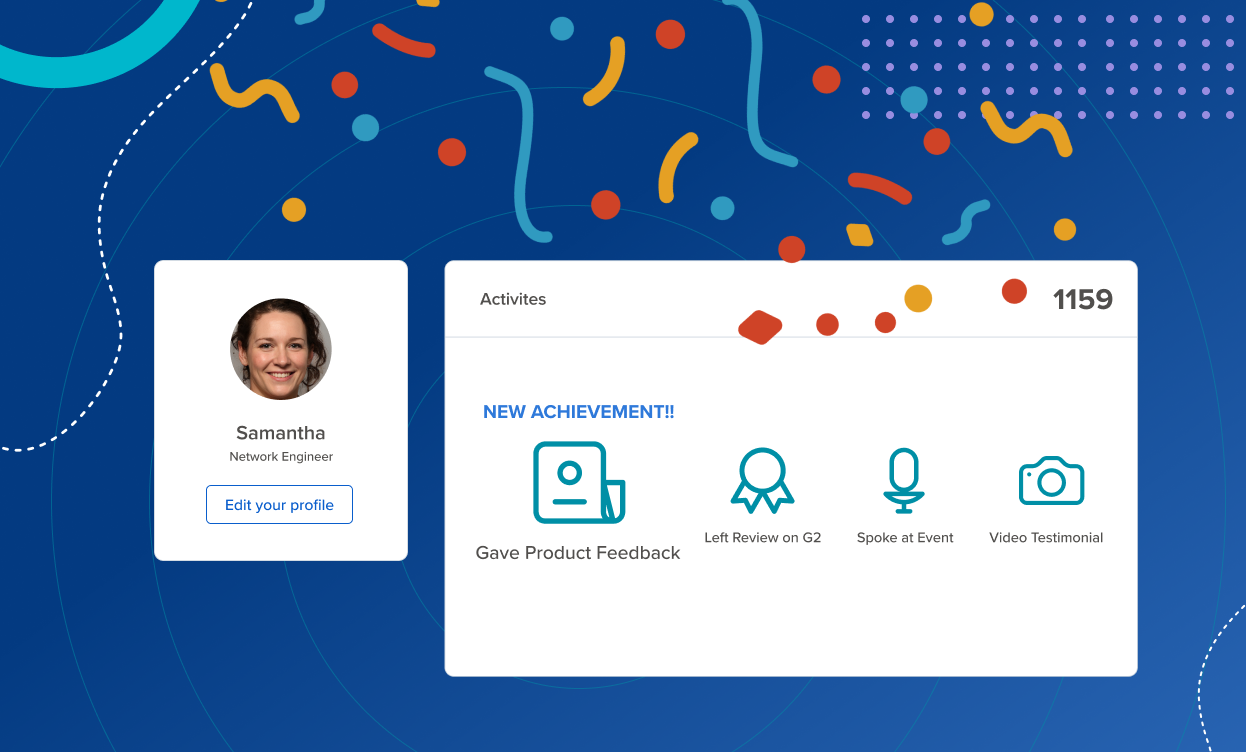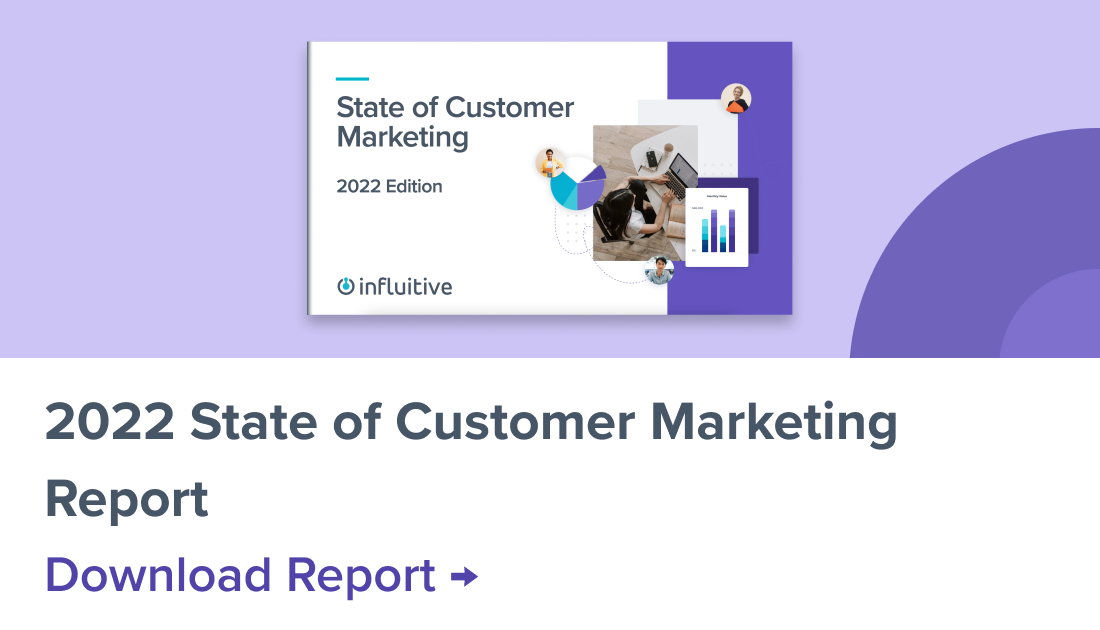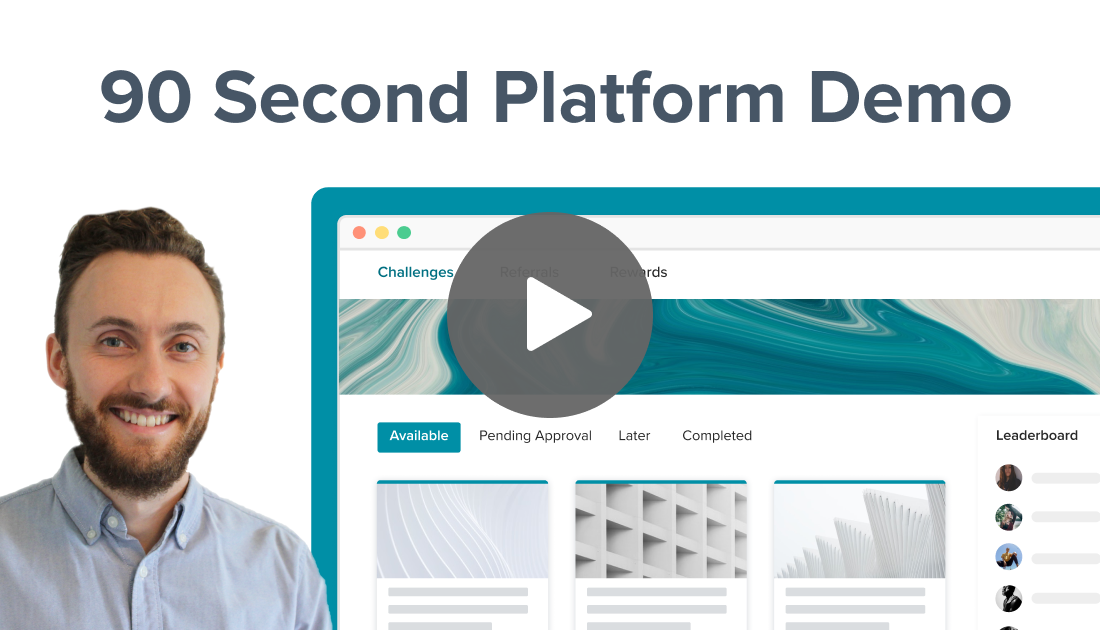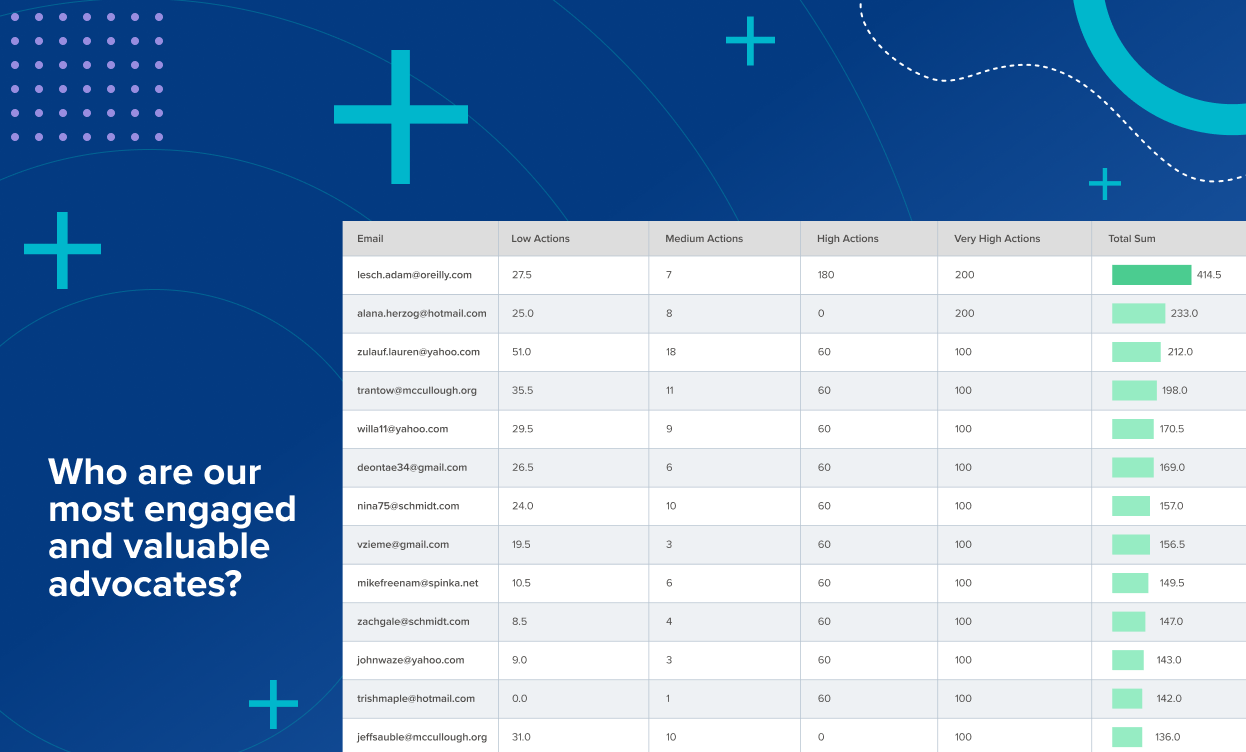Lead scoring is a popular practice within marketing automation and operations, but does it have a place in customer engagement? In this article, you’ll learn how Cisco conceptualized a lead scoring model for advocates and partnered with Influitive to build an automated dashboard to help them score their members in real-time—all while demonstrating the true value and wide impact of advocacy across the Cisco business.
The Opportunity
The idea of “Customer Engagement Lead Scoring” stemmed from a weekly conversation between Valerio Battelli, Head of Global Advocacy & Operations at Cisco, and Christina Wiese, Influitive’s Strategic Accounts Manager.
The idea? Attribute the activities that your customers take with a numerical score that would be bucketed as low, medium, or high. Activities that were highly important to the business (e.g., a customer featured in a case study) would be given a high number, whereas activities that were less valuable for the business, (e.g., following a company’s corporate social channels), would be assigned a lower number. The score would accumulate each time a customer performs an act of advocacy, and this total score would be used by Cisco to identify and target high-value advocates.
Cisco leveraged its strong relationship with Influitive to further enhance the engagement model.
“The number one question we get asked by our stakeholders is, ‘who are our most engaged and valuable advocates,’” said Rashik Rahman, Customer Advocacy Marketing Specialist at Cisco. “We know that shifting our engagement metrics strategy to a lead scoring model could help us answer this question quicker and more accurately.”
The Benefits

From a business perspective, the lead scoring model helps Cisco provide more robust reporting on the ROI their advocates are generating on wider business objectives. By being able to accurately attribute the high to very high impact activities of their advocates, at the customer contact level, Cisco can better visualize the true value of their customer advocacy strategy and programs.
For Cisco’s day-to-day core community team, this model provides a powerful tool that helps them recognize standout advocate interactions. This data will enable the team to better nurture advocates along their Cisco advocacy journey, and help surface the right opportunities and content for them at the right time. This was a key motivator for Cisco, as they wanted to ensure the model would improve the community experience for their members.
The Model-Building Process
Because of his previous lead scoring and email marketing experience, Rashik volunteered to co-lead the project with Influitive.
To kickstart this project, Cisco listed all the possible activities their advocates could engage in within the Cisco Insider Advocates community (powered by Influitive) and bucketed them into four distinct levels of effort: low, medium, high, and very high actions. Cisco really needed to dig deep to understand what was crucial to their business. For example, were advocates joining webinars more important to them than advocates sharing content on social platforms? To ensure consistent categorization, the Cisco team considered both the level of ease needed by advocates to perform the action and the impact that action would have on the wider Cisco business.
The team then agreed on the following scoring system:
- Low Actions: 0.5
- Medium Actions: 1
- High Actions: 50
- Very High Actions: 100
“We needed to have considerable numerical differences between the higher and lower actions to avoid instances where advocates who have completed a large number of lower activities ended up with higher lead scores than advocates who performed 1-2 high actions but were more selective with the low action activities they completed,” said Rahman.
Lastly, the team needed to come up with a plan to track high-value actions that could not be automatically verified through activity completions in Influitive. For example, Cisco could run a “hand raiser survey” to confirm an advocate’s interest in speaking at a digital Cisco event, but there was no way to automatically track whether that advocate followed through on the action. Instead, the day-to-day community team would need training to learn how to manually track that high-value action consistently.
Once the logistics were confirmed, Cisco partnered with Influitive to discuss the implementation and walk through a mock-up visualization for how this could be designed using Influitive’s powerful reporting mechanics. Influitive’s Practice Manager for Reporting, Laura-Lee Chen, took Cisco’s vision and created a detailed dashboard that met Cisco’s needs.
Implementing and Presenting the Model
Creating the model was only half the battle; Rashik and the team still needed to get internal buy-in and show the value of the model to the larger Cisco Customer Advocacy organization.
To do this, Rashik provided a live demonstration of the Customer Engagement Lead Scoring dashboard to the entire Cisco Global Advocacy team.
“The presentation was a huge success—my inbox was full of messages from teammates eager to learn more,” said Rahman.
After the meeting, Rashik met with the core advocacy community team to educate them on the model and discuss the appropriate cadence for reporting. Ahead of the meeting, he created a how-to guide detailing what information needed to be logged by the community team, including the number of points each activity was worth.
Next Steps and The Partnership
“It is important to highlight how important Laura-Lee, Christina, and the rest of the Influitive team were in bringing this model to life and in a record time of 3-4 months,” said Rahman. “We truly value the partnership, expertise, and professionalism we receive each day from our partners at Influitive. Cisco sees Influitive as an extension of their Global Advocacy team and their commitment to pushing Cisco to innovate is unmatched.” Rashik and the team will continue to iterate on their model as more advocacy activities get tracked.










































